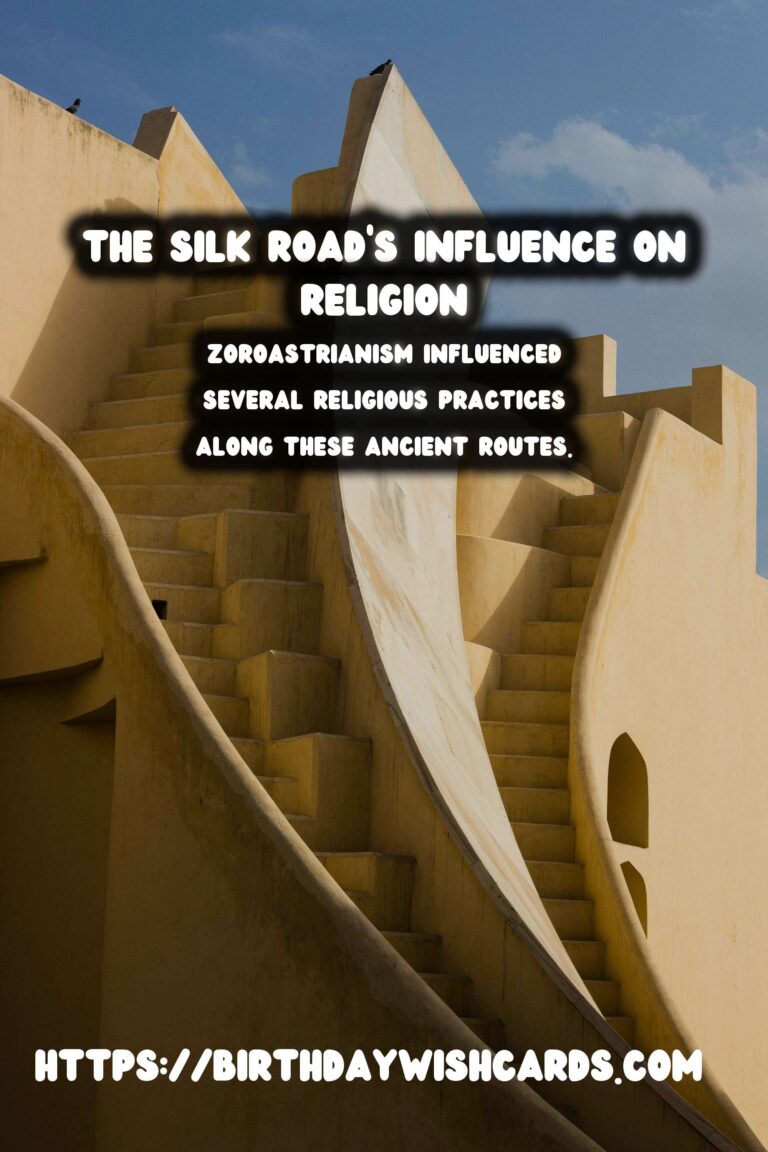
The Silk Road, a vast network of trade routes connecting the East and West, wasn’t just a conduit for goods and ideas; it served as a pivotal pathway for the dissemination of religious beliefs across continents. Spanning over 4,000 miles, this ancient trade route was instrumental in shaping cultural exchanges and fostering the spread of major world religions such as Buddhism, Christianity, Islam, Zoroastrianism, and others.
An Overview of the Silk Road
The Silk Road originated during the Han Dynasty of China around the 2nd century BCE. The term ‘Silk Road’ was coined by the German geographer Ferdinand von Richthofen in the late 19th century, although the network had been unnamed during its peak existence. Its primary function was the exchange of luxury goods like silk, spices, and precious metals. However, its influence went well beyond commerce, playing a critical role in bridging cultural and religious divides.
Buddhism: A Journey from India to the World
Buddhism, originating in the Indian subcontinent, became the first major religion to travel along the Silk Road. Emperor Ashoka’s conversion to Buddhism and his subsequent missionary efforts helped in spreading this religion far beyond India’s borders. Buddhist monks journeyed along the Silk Road, establishing monasteries and translating texts into Chinese, which facilitated the spread of Buddhism into China, Korea, Japan, and further into Central Asia.
Artefacts, such as the famed Bamiyan Buddhas of Afghanistan and the Mogao Caves in China, serve as testaments to the profound influence Buddhism exerted across Asia due to these ancient routes.
The Spread of Christianity
Christianity’s spread along the Silk Road was slower due to initial persecution by Roman authorities. However, as the Roman Empire officially adopted Christianity during the 4th century CE, Christian missionaries began to venture along these trade routes. Nestorian Christianity made significant inroads into Central Asia, establishing a stronghold as far as China, evidenced by the Nestorian Stele found in Xi’an, China, which details early Christian presence and influence in the region.
Islam: Expanding Horizons
The expansion of Islam along the Silk Road began in the 7th century, following the initial conquests of the Arab Empire. The religion spread rapidly due to its adaptability to various cultures and strong merchant connections that facilitated both trade and the exchange of spiritual ideas. Islamic architecture, scholarship, and culture flourished in Silk Road cities such as Samarkand and Bukhara that became centers of learning and religious instruction.
Zoroastrianism and Other Religions
Zoroastrianism, one of the world’s oldest religions, also had a presence on the Silk Road. It was the predominant religion of Persia before the advent of Islam and influenced other religious practices, including Judaism, Christianity, and later Stoicism. The syncretic nature of religious practice along the Silk Road facilitated the coexistence and exchange of ideas among a myriad of belief systems including Manichaeism and Daoism.
Cultural Exchange and Religion on the Silk Road
The Silk Road was not just about the exchange of tangible goods; it was a melting pot of cultures and religions. Traders, travelers, and monks created an environment ripe for cultural and religious syncretism, leading to the blending and evolution of art, music, language, and spiritual practices. This exchange underpinned a vibrant multiculturalism that reverberated through centuries, leaving a lasting impact on the socio-cultural and religious landscapes of Asia, Europe, and beyond.
Conclusion: The Enduring Legacy
Though the Silk Road as a formal trade route ceased to exist by the end of the 14th century, its impact on the spread of religion remains etched in history. Its routes facilitated the mingling of spiritual ideas which shaped civilizations, influenced spiritual practices, and led to the formation of diverse and enriched cultures. The Silk Road highlights the power of human curiosity and connectivity, as well as the importance of cultural exchanges in promoting religious diversity and understanding.
As modern globalization increases, understanding the Silk Road’s historical impact on religion provides crucial insights into how commerce, culture, and faith interact and shape societies across time and space.
The Silk Road served as a pivotal pathway for the dissemination of religious beliefs across continents. Buddhism became the first major religion to travel along the Silk Road. Christianity’s spread along the Silk Road was slower initially due to Roman persecution. The expansion of Islam along the Silk Road began in the 7th century. Zoroastrianism influenced several religious practices along these ancient routes.
#SilkRoad #ReligiousImpact

